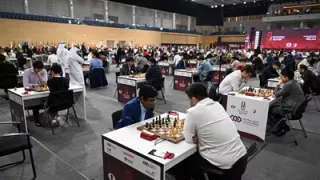Football has been a major part of the Summer Olympics since its early days. The tournament has served as a launchpad for many future stars, including Lionel Messi, Neymar, and Sergio Agüero. However, the format of the men's football competition has changed significantly over the years.
Since its formal introduction as a competition in 1908, Olympic football has transformed significantly, particularly in the men's category. Initially an amateur contest, it is now an under-23 tournament, a change that has raised many eyebrows and sparked discussions among football enthusiasts and sports historians alike.
A Brief History of Football in the Olympics
The first edition of football in the Summer Olympics was in 1900, but it was not until 1908 that the competition became a regular part of the Games.
The early years saw countries fielding amateur players, aligning with the Olympic spirit of amateurism that defined the Games at the time. This approach continued until 1984 when significant changes began to take shape.
| Era | Format |
|---|---|
| 1900-1930 | Amateur competition |
| 1934-1984 | No age restriction (professional players allowed from 1934) |
| 1988 | No age restriction, but restrictions on players who had participated in the FIFA World Cup |
| 1992-present | Under-23 tournament, with a few exceptions for overage players |
As football evolved globally, the FIFA World Cup, which began in 1930, became the premier competition for the sport, overshadowing the Olympics. To avoid competition with the World Cup, FIFA and the International Olympic Committee (IOC) reached an agreement to limit the participation of players who had competed in the World Cup. This decision was particularly aimed at teams from Europe (UEFA) and South America (CONMEBOL), the two strongest footballing continents at the time.
Also Read: Paris Olympics 2024: India's Hopes in Table Tennis
In the 1984 Los Angeles Olympics, a rule was introduced that prevented players from UEFA and CONMEBOL who had participated in the World Cup from competing in the Olympics. This rule was slightly relaxed in 1988, allowing these players to participate if they had played less than 90 minutes in a World Cup match.
The Introduction of the Under-23 Rule
In the 1980s, FIFA and the IOC clashed again over the eligibility of players in the Olympic football tournament. In 1992, a compromise was reached: the men's football competition would be restricted to players under the age of 23, with a few exceptions for overage players. This format has remained in place ever since, with a temporary relaxation to under-24 players for the Tokyo 2020 Games (held in 2021) due to the COVID-19 pandemic.
Women’s Football A Consistent Senior Competition
In contrast to the men's tournament, women's football at the Olympics has been a senior competition since its inception in 1996. This format allows national teams to field their strongest line-ups, similar to the World Cup. The decision to maintain this format reflects the different developmental stages and historical contexts of men’s and women’s football.
The format of the men's Olympic football tournament is likely to remain a topic of debate. Some argue that the U-23 format limits the prestige of the competition, while others believe that it provides a valuable opportunity for young players to showcase their talents on a global stage.
Also Read: Top 10 Indian Medal Contenders for Paris Olympics 2024


Disclaimer
Possible11 is a sports news and analysis platform designed purely for entertainment and educational purposes. All match previews, player insights, and team analyses are based on publicly available information and expert opinions. We do not promote or support betting, gambling, or real-money gaming in any form. Users are encouraged to enjoy our content responsibly and use it for informational purposes only.































Give Your Feedback